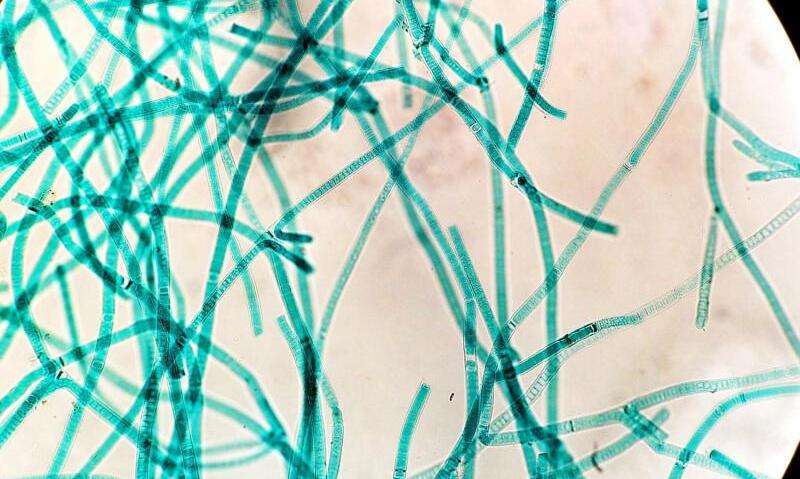This article has been reviewed according to Science X's editorial process and policies. Editors have highlighted the following attributes while ensuring the content's credibility:
fact-checked
reputable news agency
proofread
What you need to know about toxic blue-green algae this summer

With higher temperatures, there is a higher risk of encountering toxic blue-green algae in lakes, ponds and rivers. These harmful algal blooms can pose serious health risks to both humans and pets.
Here's what you need to know to stay safe while enjoying the water this summer.
Blue-green algae, scientifically known as cyanobacteria, are naturally occurring but can produce dangerous toxins under certain conditions, according to the Centers for Disease Control and Prevention. These harmful blooms are more likely to form in warm, slow-moving water that is rich in nutrients like nitrogen and phosphorus.
Elizabeth Herron, director of the University of Rhode Island's Watershed Watch program, emphasized the importance of awareness to Self: "We want to be aware and cautious, but not overly paranoid either. Being informed about what blooms look like and knowing who to call or what websites to look at are really important."
Identifying a toxic bloom can be tricky. "You could have a minor bloom that is highly toxic or a pea-soup green lake that no sane person or even dog would ever think to go into, and there's no toxins. It's really confounding," Herron explained.
Generally, be wary of water that looks like foam, oily paint or contains mats of chunky green material. Unusual colors like blue, brown or even red can also indicate a harmful bloom. A rotten egg or plant smell is another warning sign.
If you or your pets are exposed, rinse off immediately with clean water. Symptoms in humans can range from skin irritation to stomach pain, diarrhea and liver damage. For pets, watch for vomiting, difficulty breathing or seizures, and seek immediate veterinary care if these occur.
The CDC recommends checking local environmental agencies for water quality advisories before heading out. And when in doubt, it's best to stay out of the water.
2024 The Atlanta Journal-Constitution. Distributed by Tribune Content Agency, LLC.



















